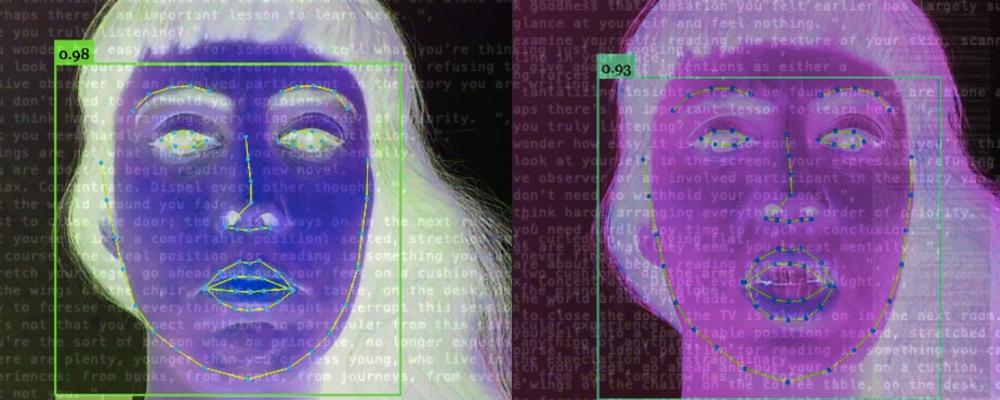Since around 2005 a growing community of artists have been engaged with the potential of the glitch – with processes and aesthetics stemming from visual errors in digital technologies. As one of the key practitioners and theorists, Rosa Menkman states: “Glitch artists make use of the accident to ‘disfigure’ flow, image, and information, or they exploit the void – a lack of information that creates space for deciphering or interpreting the process of creating (new kinds of) meaning. They reveal the machine’s techne and enable a critical sensory experience to take place around materials, ideologies and aesthetic structures.” (Menkman 2011: 33) In relation to photography the glitch not only proposes new ways of understanding the digital photographic image but also invites us to reconsider the meanings of analogue, material photography.
Glitches are effects of human-machine interactions, and their causalities can be understood as new photographic indexicalities (Pasek 2017). Furthermore, the glitch, as both method and metaphor function as a deliberate failure, disruption, and friction (Grundell 2016) to systems of knowledge, classification, and power. Thus, glitches point to normalized and naturalized flaws as well as structures and positions that do not sit comfortably in the societies we’ve created. As an activist and artistic approach, glitch can be interpreted as a forced hesitation and a failure to conform to legibility (Schneider 2021).
13:00 Introduction
13:10 Session 1
Annet Dekker The politics of glitch in photography
Monica Alcazar-Duarte << code { erasure } >>
14:25 Session 2
Magdalena Regina Tyzlik-Carver crrptng data and finding room for error
Mirabelle Jones: Can the Glitch Be Ethical? Exploring Ethics Through Participatory Artwork.
15:40 Session 3
Vendela Grundell Tactical Time: Glitches between Interfaces and Infrastructures
Majken Overgaard: Connectedness through the glitch
16:40 Concluding remarks
17.00 End
More about the speakers
Monica Alcazar-Duarte is a Mexican-British multi-disciplinary visual artist whose work acknowledges her indigenous heritage while exploring current ideals of progress. In her projects she seamlessly mixes images and new technologies, such as Augmented Reality, to create multi-layered work. In recent years Monica has mainly focused on the human relationship with nature and our current use of technology and science as an attempt to gain control over it. She is part of initiatives advocating for humane technologies and regulation of large tech companies in Europe. She is currently a nominator for the Joop Swart Masterclass, and in the jury panels of The Royal Photographic Society - IPA163 and the Bar-Tur Award. She is a member of Women Photograph.
Annet Dekker is Assistant Professor Media Studies: Archival and Information Studies at the University of Amsterdam and Visiting Professor and co-director of the Centre for the Study of the Networked Image at London South Bank University. Her recent monograph Collecting and Conserving Net Art(Routledge 2018) is a seminal work in the field of new media conservation. In 2009 she initiated aaaan.net with Annette Wolfsberger ; they coordinate artists-in-residences and set up strategic and sustainable collaborations with national and international arts organisations.
Vendela Grundell is as art historian and lecturer focusing on how photography shapes seeing and being in a digital world. This has informed her PhD on how glitch art disrupts digital interfaces (2012-2016) and her postdoc on photographers with visual impairments (2018-2020) and her study on how metadata governs cultural heritage images (2020). She has contributed with chapters for the anthologies Error, Ambiguity, Creativity (2020), Socially Engaged Art History (2021) and Visual Activism in the 21st Century (2021).
Mirabelle Jones is a non-binary creative technologist, educator, researcher, and transdisciplinary artist. They are a PhD candidate at The University of Copenhagen in the Department of Computer Science within the Human-Centered Computing section exploring ethics and AI through creative critical technical practice. They are the founder and curator of AI Performance Space, an online gallery for performance artists around the world working with artificial intelligence. They are a member of Women in Hardware and The Building Trustworthy AI Working Group of Mozilla Festival.
Majken OvergaardProgram director at Catch - Center for art and technology, Majken Overgaard is an experienced teacher with a focus on creating an inclusive learning environment. As an educational activist she has initiated numerous activities for women and other underrepresented groups in art and technology. Furthermore, she has worked as an external lecturer at the IT University of Copenhagen and Copenhagen University, where the focus has been on developing new approaches to innovation and entrepreneurship for the creative sector.
Magdalena Tyżlik-Carver is Associate Professor of Digital Communication and Culture at the School of Communication and Culture at Aarhus University (DK). She is also an independent curator. She is co-editor of Executing Practices (2018) a collection of essays by artists, programmers, theorists engaging in critical intervention into the broad concept of execution in software. She is a member of Critical Software Thing group and a member of editorial board for Data Browser series. She is also Associate Researcher with Centre for the Study of the Networked Image at the London South Bank University.
